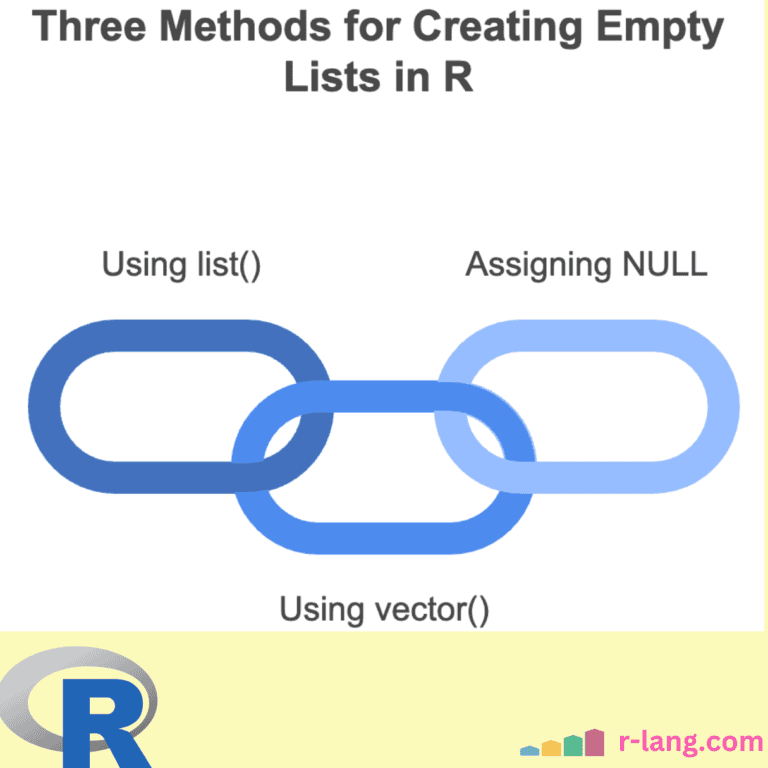Here are three ways to create an empty list in R:
- Using list()
- Using vector()
- Assigning NULL to empty an existing list
An empty list means it does not contain any elements.
An empty list and NULL have a key difference. An empty list means there is a list object with 0 elements, and a NULL list means it is NULL; it does not have a class of “list”.
Why would you create an empty list?
The most frequent use is to store elements that you will generate in the future, as you start accumulating them. It provides a flexible way to dynamically create a data structure.
You can use an empty list as a container, placeholder, or starting point for more complex data structures.
Method 1: Using list()
The list() function creates a list object with 0 elements. Don’t pass any arguments to this function.
Syntax
empty_data = list()If you find the length of the list, it will be 0.
Example
empty_list <- list()
print(empty_list)
print(length(empty_list))
Output
list()
[1] 0When you want to pre-allocate a list of specific lengths, use this approach. It also makes it more efficient because you know in advance how many elements a list will hold eventually.
Creating a list of empty lists
While working on a project, you might come across a requirement when you want a single container to hold multiple independent lists.
num_lists <- 5 # Number of empty lists you want
list_of_lists <- replicate(num_lists, list())
# Verify:
length(list_of_lists) # Output: 5
class(list_of_lists) # Output: "list"
class(list_of_lists[[1]]) # Output: "list" (each element is a list)
Method 2: Using vector()
The vector(“list“, length = 0) function is a more flexible approach to creating an empty list with a specific length. For example, you can have a list with five NULL values, which is itself empty.
Visual representation
Here, the length is 5. Even though it is empty.
Syntax
vector(mode = 'list', length)
Parameters
| Name | Description |
| mode | It must be a list in our context. |
| length | It is several elements filled with NULL. |
Example
len <- 5
empty_list <- vector(mode = "list", length = len)
empty_list
class(empty_list)
print(length(empty_list))Output
[[1]]
NULL
[[2]]
NULL
[[3]]
NULL
[[4]]
NULL
[[5]]
NULL
[1] "list"
[1] 5Method 3: Assigning NULL to an existing list
If you assign NULL to an existing list, it will become NULL. It’s crucial to know that after assigning NULL, the class of the object becomes “NULL”, not “list”.
So, here, the class itself is changing from “list” to NULL. If you want to keep the class as a “list”, then refer to the list() approach.
Example
rv <- c(1, 2, 3, 4)
lst <- list(rv)
lst
typeof(lst)
lst <<- NULL
lst
typeof(lst)Output
[[1]]
[1] 1 2 3 4
[1] "list"
NULL
[1] "NULL"That’s it!

Krunal Lathiya is a seasoned Computer Science expert with over eight years in the tech industry. He boasts deep knowledge in Data Science and Machine Learning. Versed in Python, JavaScript, PHP, R, and Golang. Skilled in frameworks like Angular and React and platforms such as Node.js. His expertise spans both front-end and back-end development. His proficiency in the Python language stands as a testament to his versatility and commitment to the craft.



